- Suckers
- Suckers with well-developed muscualr suction pad and wall ring; small simple aperature (drawings on right).
- Eyes
- Large.
- Large.
- Funnel
- Funnel organ V-shaped.
- Funnel organ V-shaped.
- Fins
- Fins long, 53-64% of ML
- Fins without anterior lobe.
- Gills
- 6-8 primary lamellae, innermost and outermost reduced insize.
- Lamellae 3-5 on outer demibranch with common afferent vessel at base.
- Optic lobe
- Optic lobe kidney shaped.
- 2-5 optic bundles arise from optic lobe.
- Digestive system
- Radula absent.
- Salivary glands absent.
- Digestive tract with bilobed digestive gland.
- Intestine about 1.5 times length of oesophagus.
- Beaks
- Upper beak (left) with strong lateral-wall fold.
- Lower beak (right) with two weak lateral-wall folds.
- Male reproductive system
- Accessory gland 1 dominates accessory gland complex..
- Penis well developed.
- Female reproductive system
- Proximal portion of oviducal gland about half size of distal portion.
- Distal oviduct short.
- Shell
- U-shape.
- Solid.
- Saddle with single outer groove, convex inner margins.
- Wings short, taper to acute points.
- Muscle insertion points marked by two small prominences.
- Pigmentation
- Areolar spots on dorsal surfaces of mantle, head and all arm bases; mature animals with 7-10 spots on head and each arm I, 5-7 spots on head and each arm II, 3-5 spots on each arm III and 1-5 spots on each arm IV.
- Oral surface of arms and web deep maroon, suckers paler, cream colored.
- Dorsal surfaces of head and arms purplish-red.
- Ventral surface of mantle, dorsal surfaces of fins, orbit, web margin and tips of arms free from web paler, translucent to cream colored.
- Measurements
Opisthoteuthis chathamensis: Description Continued
Steve O'Shea, Richard E. Young, and Michael VecchioneReferences
O'Shea, Steve. 1999. The Marine Fauna of New Zealand: Octopoda (Mollusca: Cephalopoda). NIWA Biodiversity Memoir 112: 280pp.
About This Page
Steve O'Shea

Oceanic Sciences Research Institute, Auckland University of Technology, Auckland, New Zealand

University of Hawaii, Honolulu, HI, USA

National Museum of Natural History, Washington, D. C. , USA
Page copyright © 2003 , , and
All Rights Reserved.

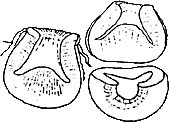
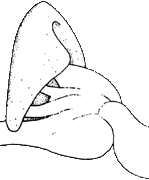


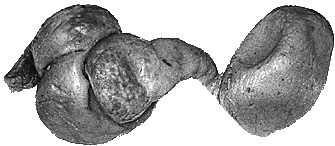
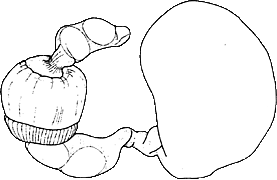
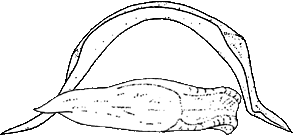


 Go to quick links
Go to quick search
Go to navigation for this section of the ToL site
Go to detailed links for the ToL site
Go to quick links
Go to quick search
Go to navigation for this section of the ToL site
Go to detailed links for the ToL site